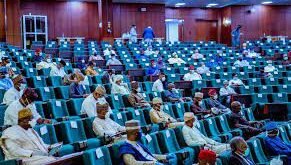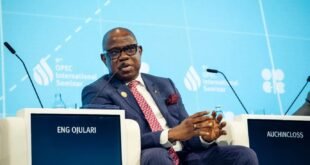Claiming: In 1970, there were less than 7 million Nigerians in multidimensional poverty. In 2025, more than 170 million Nigerians had fallen into multidimensional poverty gaps.
Indictment: The first claim is partly true while the second claim is wrong and misleading. Complete text:
The two -year assessment of the Tinubu Bola President dominated public discourse lately.
Contributing to the ongoing discourse in the TV political channel today appearing on June 3, the candidate for the President of the African Action Congress (AAC) Omoyle Sowore statement in criticism of current administration.
“We have become a country that has encouraged people not to become poverty this time but into multidimensional poverty. In 1970, there were less than 7 million Nigerians in multidimensional poverty. In 2025, there were more than one hundred and seventy million of Nigerians in multidimensional poverty,” he said.
Three years after Nigerian independence from Britain in 1960, the three-year-old civil war erupted (1967-70). During this period, there is a little or no economic prosperity, coupled with four successive coups.
Verification:
Political instability in post-independence Nigeria caused a major disturbance to economic growth despite explosions of oil and agriculture that developed.
The country’s population estimated to be more than 55 million in 1970. While data for poverty at that time was rare, some sources set it at 13%. Importantly, there has been an increase in population in poverty in Nigeria. In 1985, the poverty rate was 47.8%, when the estimated population was established more than 83 million, representing more than 40 million poor Nigerians, according to World Bank data.
Meanwhile, the National Statistics Bureau has revealed that there is 133 million Nigeria Live in multidimensional poverty in 2022.
According to the World Bank, Multidimensional poverty The index “Measuring the percentage of households in a three -dimensional seized country – poverty, education, and basic infrastructure services – to capture a more complete picture of poverty.”
Three years after the NBS report was released, a new government had emerged and a new economic policy was implemented. Likewise, the new report has embed poverty levels in Nigeria at different points.
For example, the World Bank, in 2024 Nigeria Development Update (NDU) 2024 releaseD, Placing the actual number of Nigeria in poverty at a price of 129 million. The report records that The part of the Nigerians living below the national poverty line has increased from 40.1 percent 2018 to 56 percent in 2024.
Also in January 2025, Pricewaterhouse Coopers (PWC) International Limited projects an increase in poverty levels in Nigeria.
According to a report entitled, “2025 Nigerian Budget and Economic Prospects”, PWC noted that increasing inflation, increasing interest rates, and the value of depreciation of naira can encourage a Additional 13 Million Nigerians Below the national poverty line in 2025.
Even with this new projection, the level of Nigerian poverty is not expected to reach 170 Million as stressed by Sowore.
Conclusion:
Sowore’s claim that there were 7 million Nigerians in multidimensional poverty in 1970 It cannot be ascertained with reliability, although the evidence shows it is partly true.
However, a politician claim that 170 million Nigerians lived in poverty in 2025 and misleading.
By Yahya Quadri
 JamzNG Latest News, Gist, Entertainment in Nigeria
JamzNG Latest News, Gist, Entertainment in Nigeria









